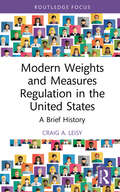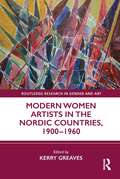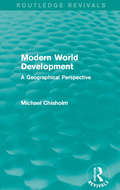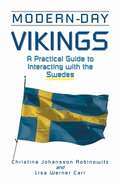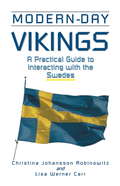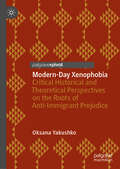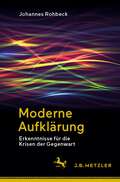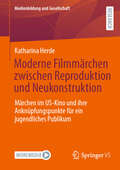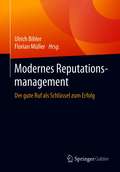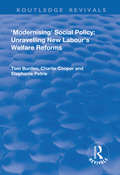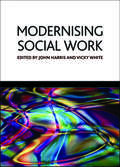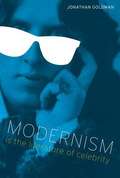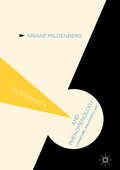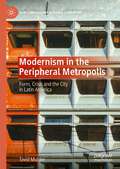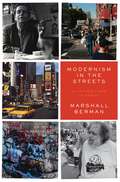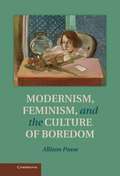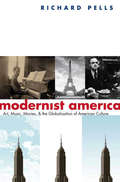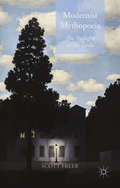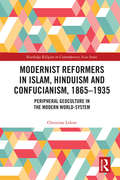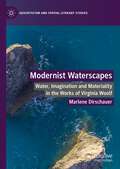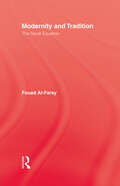- Table View
- List View
Modern Weights and Measures Regulation in the United States: A Brief History (Routledge Research in Public Administration and Public Policy)
by Craig A. LeisyIn this book, Craig A. Leisy provides a concise history of weights and measures regulation in the United States from the early 20th century up to the present day. Written for academic and professional readers, Leisy describes basic terms and concepts, the origins and history of weights and measures laws, weights and measures regulation, the economics of regulation, key enforcement cases, landmark legal decisions, the effects of public policy, and a forecast on the future of weights and measures regulation. He also discusses the impact of weights and measures regulation on both producers (sellers) and consumers (buyers) in the marketplace. The book also features a new 2019 survey of state weights and measures regulatory programs, an introduction to the economics of weights and measures regulation, a case study of the municipal weights and measures regulatory program in Seattle, Washington, details of a major gasoline dispenser fraud case in Los Angeles County, and landmark legal cases related to net contents of packaged goods. Modern Weights and Measures Regulation in the United States is the only book on this subject from the perspective of a former long-time weights and measures regulatory official.
Modern Women Artists in the Nordic Countries, 1900–1960 (Routledge Research in Gender and Art)
by Kerry GreavesThis transnational volume examines innovative women artists who were from, or worked in, Denmark, Finland, Greenland, Iceland, Norway, Sápmi, and Sweden from the emergence of modernism until the feminist movement took shape in the 1960s.The book addresses the culturally specific conditions that shaped Nordic artists’ contributions, brings the latest methodological and feminist approaches to bear on Nordic art history, and engages a wide international audience through the contributors’ subject matter and analysis. Rather than introducing a new history of "rediscovered" women artists, the book is more concerned with understanding the mechanisms and structures that affected women artists and their work, while suggesting alternative ways of constructing women’s art histories. Artists covered include Else Alfelt, Pia Arke, Franciska Clausen, Jessie Kleemann, Hilma af Klint, Sonja Ferlov Mancoba, Greta Knutson, Aase Texmon Rygh, Hannah Ryggen, Júlíana Sveinsdóttir, Ellen Thesleff, and Astri Aasen.The target audience includes scholars working in art history, cultural studies, feminist studies, gender studies, curatorial studies, Nordic studies, postcolonial studies, and visual studies.
Modern World Development: A Geographical Perspective (Routledge Revivals)
by Michael ChisholmSince the time of Adam Smith, there has been a voluminous literature concerned with the differing wealth of nations and the variation in the nature of economic growth, and several schools of thought have held precedence at different times. The fundamental mechanisms have been regarded by some as capital accumulation and investment, and by others as entrepreneurial ability. Modern World Development, first published in 1982, shows that the length of time under consideration materially affects the relative significance assigned to the factors involved; similarly, the size of an area cannot be ignored. Through an examination of the major theories of economic growth, the role of natural resources, the core-periphery model of world development, environmental change and the concept of ‘human capital’, Professor Chisholm has written a stimulating and important book which will appeal to students of economics, history and geography.
Modern-Day Vikings: A Pracical Guide to Interacting with the Swedes
by Christina Johansson Robinowitz Lisa Werner CarrA window into Swedish culture, Modern Day Vikings: A Practical Guide to Interacting with the Swedes examines Sweden's social model and underlying values. Christina Robinowitz and Lisa Carr provide a window into the Swedish heritage of self-sufficiency, fairness, egalitarianism and democracy, breaking through the stereotypes often associated with the country.
Modern-Day Vikings: A Pracical Guide to Interacting with the Swedes
by Christina Johansson RobinowitzModern-Day Vikings provides a window into what one world traveler called the most American of European countries: Sweden. Yet, surface similarities between the two nations conceal essential differences. Christina Robinowitz and Lisa Werner Carr provide insights and strategies for successful interactions with Swedes, whether business or social. True to its title, Modern-Day Vikings traces some of Sweden’s most ingrained cultural traits back to its Viking heritage: self-sufficiency, fairness, egalitarianism and democracy. The authors also examine Sweden’s famous “cradle-to-grave” social model and explore the values underlying modern Swedish culture, such as lagom (moderation), the law of Jante (personal modesty), communication styles and business practices.
Modern-Day Xenophobia: Critical Historical and Theoretical Perspectives on the Roots of Anti-Immigrant Prejudice
by Oksana YakushkoThis book engages the topic of xenophobia from both psychological and socio-political approaches. Recently, xenophobia as a social standpoint or social attitude has come under increased scrutiny by the public, scholars, and educators; however, few works have directly summarized current theories of xenophobia as well as articulated critical perspectives on the issue. This work provides an overview of the concept, historical factors related to its development, and a review of varied theoretical perspectives. The intertwining of psychological and sociological perspectives allows the author to present a multi-dimensional, multi-layered argument in a way which effectively prevents any attempt to apply any one single over-arching theory, and thus effectively presents the complexity of the topic at hand.
Moderne Aufklärung: Erkenntnisse für die Krisen der Gegenwart
by Johannes RohbeckMit den Menschen der Aufklärung verbindet uns die gemeinsame Erfahrung tiefgreifender technischer, sozialer und kultureller Umbrüche. Schon damals stellten sich viele drängende Fragen unserer Zeit: zum Wahrheitsanspruch in Wissenschaft und Politik, zum Verhältnis der Geschlechter, zur sozialen und globalen Gerechtigkeit, zum nachhaltigen Wirtschaften, zum Frieden in Europa und der Welt oder zum Umgang mit Naturkatastrophen. Dieses Buch aktualisiert die Erkenntnisse der Aufklärung und hilft uns, mit ihnen die Krisen der Gegenwart neu zu verstehen.
Moderne Filmmärchen zwischen Reproduktion und Neukonstruktion: Märchen im US-Kino und ihre Anknüpfungspunkte für ein jugendliches Publikum (Medienbildung und Gesellschaft #53)
by Katharina HerdeDas US-Kino nimmt sich seit einiger Zeit wieder europäischen Märchenstoffen an und erzählt die Geschichten vermeintlich neu. Dabei sprechen die Filme nicht mehr nur Kinder und Familien an, sondern stellen Themenaspekte in den Vordergrund, die in der Jugendphase von besonderer Relevanz sind. In einer detaillierten filmanalytischen Auseinandersetzung, die qualitative und quantitative Methoden nutzt, werden in diesem Buch sechs moderne Filmmärchen auf ihren Umgang mit den Märchenstoffen Aschenputtel und Schneewittchen hin untersucht sowie die Anknüpfungspotenziale für jugendliche Rezipient*innen herausgearbeitet. Dabei wird nicht nur auf die Themen selbst eingegangen, sondern auch auf die Art und Weise, wie diese in den Filmen thematisiert werden. Zudem wird dargelegt welche Normen und Werte über sie vermittelt werden. Das Buch zeigt auf, wie aktuell Märchenstoffe bis heute im US-Kino sind, wie die Filme mit dem Ruf der Märchen als Kindermedien brechen, was über die Filme vermittelt wird und wie letztendlich bekannte Erzählinhalte reproduziert und dabei gleichzeitig neu konstruiert werden.
Moderne Wissensgesellschaften
by Nico StehrDie zentrale These des Buches lautet, dass nicht Natur, Unfälle, Gewalt, Katastrophen, Macht usw., sondern Wissen mehr denn je die Grundlage und Richtschnur menschlichen Handelns in allen Bereichen unserer Gesellschaft ist. Diese Untersuchung über Wissensgesellschaften ist daher als Antwort auf die grundlegende Beobachtung geschrieben, dass die moderne Wissenschaft keineswegs nur, wie heute noch oft angenommen wird, der Schlüssel und Zugang zu den Geheimnissen der Natur und des menschlichen Verhaltens ist, sondern vor allem das Werden einer Welt: Wissen als Motor und nicht nur als Kamera. Diese beispiellose Bedeutung des wissenschaftlichen Wissens bedeutet jedoch nicht, dass es ihm gelingen wird, traditionelle Lebensweisen und Einstellungen einfach zu überrollen, wie immer wieder erhofft oder ernsthaft befürchtet. Gleichzeitig sind Wissensgesellschaften keine soziale Formation im Stillstand. Die Dynamik des Wirtschaftssystems von Wissensgesellschaften, die Hand in Hand mit der Verrechtlichung von Wissen als der wichtigsten Ressource von Wissensgesellschaften geht, führt unmittelbar zur Transformation der Wissensgesellschaft in einen Wissenskapitalismus..
Modernes Reputationsmanagement: Der gute Ruf als Schlüssel zum Erfolg
by Ulrich Bihler Florian MüllerDieses Buch erklärt, wie modernes Reputationsmanagement von Unternehmen und Organisationen erfolgreich und nachhaltig gestaltet werden kann – insbesondere in volatilen Zeiten des digitalen und gesellschaftlichen Wandels. Emotionale Aspekte und vor allem die Frage, wofür ein Unternehmen steht und eintritt, spielen eine immer wichtigere Rolle – zum Beispiel bei der Kaufentscheidung des Kunden. Die Reputation eines Unternehmens als immaterieller Vermögenswert bestimmt damit maßgeblich den Erfolg und muss bei allen unternehmerischen Herausforderungen professionell, integriert und zielorientiert gemanagt werden. Die Beitragsautoren erläutern grundlegende Funktionsweisen von Unternehmensreputation sowie die Wirkmechanismen von Issues und Public Affairs Management für einen guten Ruf. Sie zeigen auf, wie beispielsweise Predictive Analytics, Purpose, Thought-Leadership-Strategien oder multisensuale Stakeholderkommunikation einen dringend notwendigen Perspektivwechsel herbeiführen und wie Interne Kommunikation sowie CEO-Kommunikation einen ganzheitlichen Reputationsansatz unterstützen können.Ein Buch voller überraschender Perspektiven, neuer Zusammenhänge, interessanter Insights und hilfreicher Praxistipps.
Modernising Social Policy: Unravelling New Labour's Welfare Reforms (Routledge Revivals)
by Charlie Cooper Tom Burdon Steph PetrieThis title was first published in 2000: The 1997 election marked the prospect of a new era in social welfare - the possibility of establishing a third phase in the post-war history of the welfare state (the first being the creation of the Keynesian welfare state, the second the Thatcher/Major neo-liberal reforms). The key aim of this book is to critically explore the options for the future of welfare under New Labour. The welfare state that the government inherited from the Conservatives is widely believed to be in a critical condition. At the same time, there is evidence of widening social inequality in Britain which existing social policy measures fail to address. Whilst acknowledging that future welfare strategies are likely to operate within a market paradigm, the key argument of this book is that welfare providers should operate within a more accountable and democratic environment where service-users have the right to participate in decision-making processes affecting their welfare - regardless of the ability to pay. The book concludes that the dominant discourse shaping social policy in Britain must be recognized and should not be accepted uncritically and that there are very real economic (as well as social) benefits from taking measures to address social disadvantage.
Modernising social work: Critical considerations
by John Harris Vicky WhiteNew Labour's modernisation agenda has produced an avalanche of change that has posed formidable challenges for everyone involved in social work, whether as service users, practitioners or managers. Modernising Social Work provides a radical appraisal of the far-reaching changes in their theoretical, historical and policy contexts. The book is organised into three sections that consider: the inter-relationship of modernisation and managerialism, modernisation's impact on service users and the ways in which social workers and front-line managers seek to exercise professional discretion for the benefit of service users within a workplace culture of intensified scrutiny and control. Analysis of a range of key developments in all three areas reveals the modernisation agenda as complex and contested. The book's three sections cover the main issues of the modernisation agenda, making it ideal for teaching. Locating the issues in their theoretical, historical and policy contexts meets the needs of student readers and experienced social workers will appreciate the emphasis on empirical research as well as practice experience.
Modernism Is the Literature of Celebrity
by Jonathan GoldmanThe phenomenon of celebrity burst upon the world scene about a century ago, as movies and modern media brought exceptional, larger-than-life personalities before the masses. During the same era, modernist authors were creating works that defined high culture in our society and set aesthetics apart from the middle- and low-brow culture in which celebrity supposedly resides. To challenge this ingrained dichotomy between modernism and celebrity, Jonathan Goldman offers a provocative new reading of early twentieth-century culture and the formal experiments that constitute modernist literature's unmistakable legacy. He argues that the literary innovations of the modernists are indeed best understood as a participant in the popular phenomenon of celebrity. Presenting a persuasive argument as well as a chronicle of modernism's and celebrity's shared history, Modernism Is the Literature of Celebrity begins by unravelling the uncanny syncretism between Oscar Wilde's writings and his public life. Goldman explains that Wilde, in shaping his instantly identifiable public image, provided a model for both literary and celebrity cultures in the decades that followed. In subsequent chapters, Goldman traces this lineage through two luminaries of the modernist canon, James Joyce and Gertrude Stein, before turning to the cinema of mega-star Charlie Chaplin. He investigates how celebrity and modernism intertwine in the work of two less obvious modernist subjects, Jean Rhys and John Dos Passos. Turning previous criticism on its head, Goldman demonstrates that the authorial self-fashioning particular to modernism and generated by modernist technique helps create celebrity as we now know it.
Modernism and Japanese Culture
by Roy StarrsAn in-depth and comprehensive account of the complex history of Japanese modernism from the mid-19th century 'opening to the West' until the 21st century globalized world of 'postmodernism. ' Its concept of modernism encompasses not just the aesthetic avant-garde but a wide spectrum of social, political and cultural phenomena.
Modernism and Phenomenology: Literature, Philosophy, Art (Modernism and... #10)
by Ariane MildenbergBraiding together strands of literary, phenomenological and art historical reflection, Modernism and Phenomenology explores the ways in which modernist writers and artists return us to wonder before the world. Taking such wonder as the motive for phenomenology itself, and challenging extant views of modernism that uphold a mind-world opposition rooted in Cartesian thought, the book considers the work of modernists who, far from presenting perfect, finished models for life and the self, embrace raw and semi-chaotic experience. Close readings of works by Paul Cézanne, Gertrude Stein, Franz Kafka, Gerard Manley Hopkins, Wallace Stevens, Paul Klee, and Virginia Woolf explore how modernist texts and artworks display a deep-rooted openness to the world that turns us into "perpetual beginners." Pushing back against ideas of modernism as fragmentation or groundlessness, Mildenberg argues that this openness is less a sign of powerlessness and deferred meaning than of the very provisionality of experience.
Modernism and the Practice of Proletarian Literature
by Simon CooperThis book tests critical reassessments of US radical writing of the 1930s against recent developments in theories of modernism and the avant-garde. Multidisciplinary in approach, it considers poetry, fiction, classical music, commercial art, jazz, and popular contests (such as dance marathons and bingo). Relating close readings to social and economic contexts over the period 1856–1952, it centers in on a key author or text in each chapter, providing an unfolding, chronological narrative, while at the same time offering nuanced updates on existing debates. Part One focuses on the roots of the 1930s proletarian movement in poetry and music of the nineteenth and early twentieth centuries. Part Two analyzes the output of proletarian novelists, considered alongside contemporaneous works by established modernist authors as well as more mainstream, popular titles.
Modernism in the Peripheral Metropolis: Form, Crisis and the City in Latin America (New Comparisons in World Literature)
by Tavid MulderThis book shows how Latin American writers and artists in the crisis-decades of the 1920s and 1930s used modernist techniques to explore national issues in relation to global capitalism. Drawing on a rich interdisciplinary archive of novels, poetry, essays, photography, and architecture, it includes chapters on major figures and the transformations that marked Latin American cities at the beginning of the twentieth century: the poet Manuel Maples Arce and Mexico City; the essayist José Carlos Mariátegui and Lima; the novelist Roberto Arlt and Buenos Aires; the novelist Patrícia Galvão and São Paulo. Tavid Mulder argues that the Latin American city should be understood as a peripheral metropolis: a social space that is simultaneously peripheral relative to the center of the world economy and a metropolis in relation to the region’s vast, underdeveloped hinterlands. Conceiving of modernist techniques as ways of understanding how the dualisms of Latin American societies—urban and rural, wealth and poverty, cosmopolitan and national—are bound together by the internal contradictions of capitalism, this volume insists on the ability of literary and artistic works to grasp the process through which untenable situations of crisis are not overcome but stabilized in the periphery. It thereby sheds light on issues in Latin America that have become increasingly urgent in the twenty-first century: inequality, indigenous migration, surplus populations, and anomie.
Modernism in the Streets: A Life and Times in Essays
by Marshall Berman David Marcus Shellie SclanEssays tracing the intellectual life of a quintessential New York City writer and thinkerMarshall Berman was one of the great urbanists and Marxist cultural critics of the twentieth and twenty-first centuries, and his brilliant, nearly sui generis book All That Is Solid Melts Into Air is a masterpiece of the literature on modernism. But like many New York intellectuals, the essay was his characteristic form, accommodating his multifarious interests and expressing his protean, searching exuberant mind. This collection includes early essays from and on the radical ’60s, on New York City, on literary figures from Kafka to Pamuk, and late essays on rock, hip hop, and gentrification. Concluding with his last essay, completed just before his death in 2013, this book is Berman’s intellectual autobiography, tracing his career as a thinker through the way he read the “signs in the street.””
Modernism, Feminism, and the Culture of Boredom
by Allison PeaseBored women populate many of the most celebrated works of British modernist literature. Whether in popular offerings such as Robert Hitchens's The Garden of Allah, the esteemed middlebrow novels of May Sinclair or H. G. Wells, or now-canonized works such as Virginia Woolf's The Voyage Out, women's boredom frequently serves as narrative impetus, antagonist and climax. In this book, Allison Pease explains how the changing meaning of boredom reshapes our understanding of modernist narrative techniques, feminism's struggle to define women as individuals and male modernists' preoccupation with female sexuality. To this end, Pease characterizes boredom as an important category of critique against the constraints of women's lives, arguing that such critique surfaces in modernist fiction in an undeniably gendered way. Engaging with a wide variety of well- and lesser-known modernist writers, Pease's study will appeal especially to researchers and graduates in modernist studies and British literature.
Modernist America: Art, Music, Movies, and the Globalization of American Culture
by Richard PellsAmerica's global cultural impact is largely seen as one-sided, with critics claiming that it has undermined other countries' languages and traditions. But contrary to popular belief, the cultural relationship between the United States and the world has been reciprocal, says Richard Pells. The United States not only plays a large role in shaping international entertainment and tastes, it is also a consumer of foreign intellectual and artistic influences. Pells reveals how the American artists, novelists, composers, jazz musicians, and filmmakers who were part of the Modernist movement were greatly influenced by outside ideas and techniques. People across the globe found familiarities in American entertainment, resulting in a universal culture that has dominated the twentieth and twenty-first centuries and fulfilled the aim of the Modernist movement--to make the modern world seem more intelligible. Modernist America brilliantly explains why George Gershwin's music, Cole Porter's lyrics, Jackson Pollock's paintings, Bob Fosse's choreography, Marlon Brando's acting, and Orson Welles's storytelling were so influential, and why these and other artists and entertainers simultaneously represent both an American and a modern global culture.
Modernist Mythopoeia: The Twilight of the Gods
by S. FreerModernist Mythopoeia argues that the experimental modernist form of mythopoeia was directed towards expressing a range of metaphysical perspectives that fall between material secularism and dogmatic religion. The book is a timely addition to the 'post-secular' debate as well as to the 'return of religion' in modernist studies.
Modernist Reformers in Islam, Hinduism and Confucianism, 1865-1935: Peripheral Geoculture in the Modern World-System (Routledge Religion in Contemporary Asia Series #1)
by Christian LekonThis volume presents a comparison of seven major religious reformers of the late nineteenth and early twentieth centuries: For Islam, Jamal ad-Din al-Afghani, Muhammad ‘Abduh and Muhammad Rashid Rida; for Hinduism, Dayananda Sarasvati and Swami Shraddhananda; for Confucianism, K’ang Yu-wei and Liang Ch’i-ch’ao. Each of these reformers attempted to bring a major world religion in line with global modernity by creatively reinterpreting the traditions on which this religion was based. The book outlines the lives and major ideas of these reformers, highlights the similarities between them, interprets their agenda as expressions of peripheral geoculture (centrist liberalism, antisystemic movements, positivism) in line with the Modern World-System (MWS) approach and links them with their ‘fundamentalist’ successors from the mid-twentieth to the early twenty-first centuries. This way, the author seeks to redress the Eurocentric bias that sometimes sneaks into the MWS perspective. While there are numerous studies dealing with each of these reformers, the original contribution of this book is to provide a systematic comparison between them and to interpret them within a larger theoretical framework. It will be of interest for scholars and students working on issues related to religion, modernity and historical sociology.
Modernist Waterscapes: Water, Imagination and Materiality in the Works of Virginia Woolf (Geocriticism and Spatial Literary Studies)
by Marlene DirschauerThis book identifies water as the key element of Virginia Woolf’s modernist poetics. The various forms, movements, and properties of water inspired Woolf’s writing of reality, time, and bodies and offered her an apt medium to reflect on the possibilities as well as on the exhaustion of her art. As a deeply intertextual writer, Woolf recognised how profoundly water has shaped human imagination and the landscape of the literary past. In line with recent ecocritical and ecofeminist assessments of her works, this book also shows Woolf’s attraction to water as part of an indifferent nature that exists prior to and beyond the symbolic. Through close analyses that span the whole of Woolf’s oeuvre, and that centre on the metaphorical and the material voices of water in her works, Modernist Waterscapes offers a fresh perspective on a writing that is as versatile as the element from which it draws. The monograph addresses postgraduate students and scholars working in modernist studies and Woolf studies in particular.
Modernity & Tradition
by Al-FarsyFirst published in 1990. Routledge is an imprint of Taylor & Francis, an informa company.
Modernity - An Ethnographic Approach: Dualism and Mass Consumption in Trinidad (Explorations In Anthropology Ser.)
by Daniel MillerFrom cultural studies, sociology, media studies, gender studies and elsewhere there have been a spate of books recently which have attempted to characterize the state of modernity. Many of these have also argued that what is required is an ethnographic work to determine how far these supposed trends actually apply to a given population. This book explicitly accepts this challenge and, in so doing, demonstrates the potential of modern anthropology studies. It starts by summarizing some debates on modernity and then argues that the Caribbean island of Trinidad is particularly apt for such a study given the origins of its population in slavery and indentured labour, both forms of extreme social rupture. The particular focus of this book is on mass consumption and the way goods and imported images such as soap opera have been used to express and develop a number of key contradictions of modernity. It will be of interest to anthropologists looking for a new potential for the discipline, as well as students in other fields who will be interested in the new contribution of anthropology to their debates.
